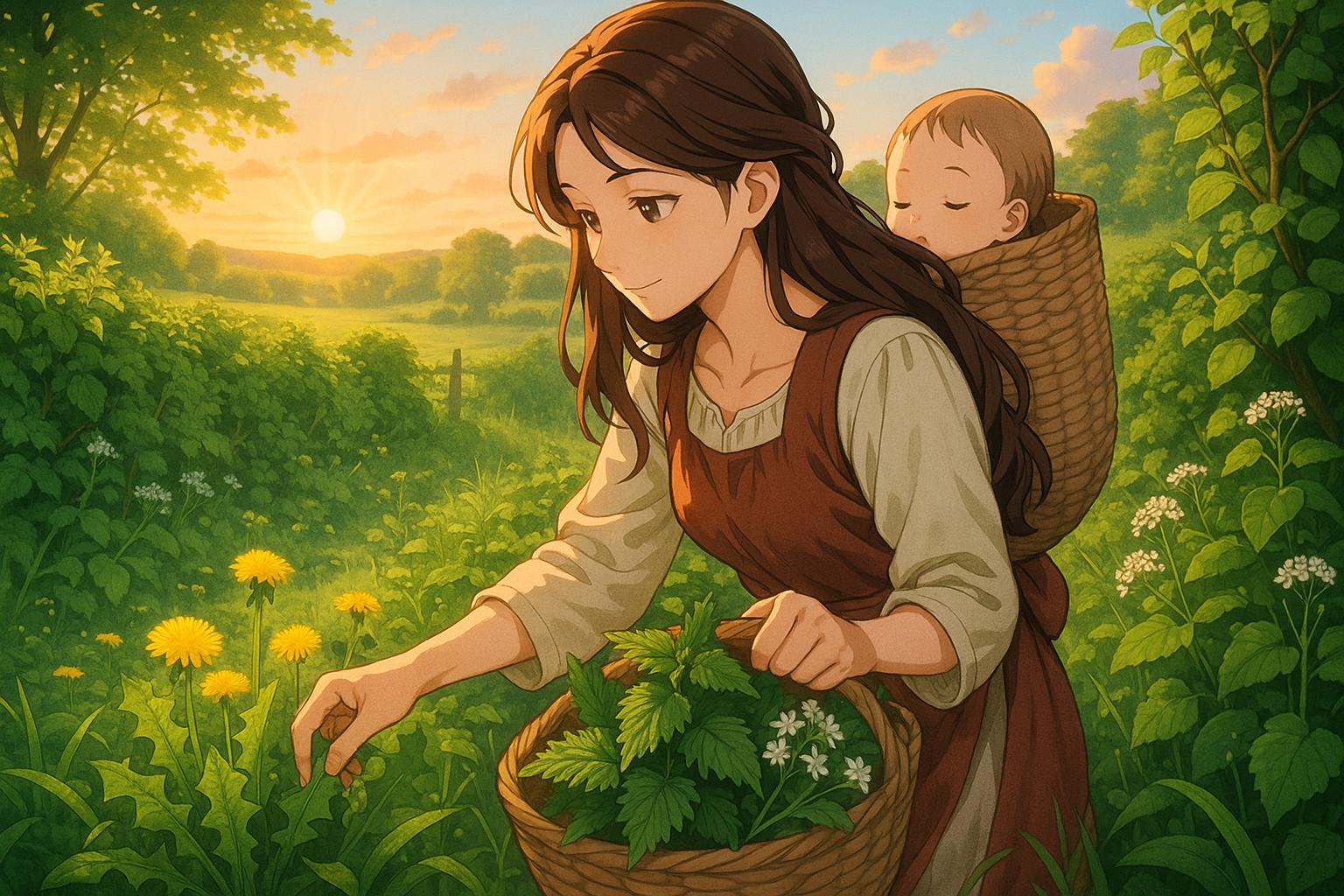I welcomed my daughter into the world during one of the coldest spells of early this year, and now, my primary role is to produce sustenance for her. My days stretch from dawn until the midnight hours, punctuated only by brief respites that might allow for a moment of respite. This new phase of life has unexpectedly transformed my appetite, prompting me to forage for wild edibles native to Britain—most recently, indulging in nettles, dandelions, and hedge garlic, which I consume with abandon.
The vividness of early May, a month that encapsulates the essence of bloom and vitality, invites exploration of its rich, green larder. With my hands deep in the earth, I discover that I can feast on foods like hedge garlic, also known as Jack by the hedge. This wild plant, closely related to the brassica family, has a striking taste profile reminiscent of horseradish and garlic, making it an intriguing addition to any dish. The enthusiasm for such foraging mirrors trends in urban settings, where chefs and home cooks alike are increasingly turning to the natural bounty right around them.
In London, for example, Michelin Green Star chef Chantelle Nicholson advocates for urban foraging, utilising the city’s green spaces as her pantry. She encourages exploration of wild garlic, three-cornered leek, and nettles, which not only provide flavour but also crucial nutrients. Nicholson highlights how this return to our culinary roots is motivated by a desire for sustainability, fresh ingredients, and even mental health benefits derived from connecting with nature.
The nutritional advantages of foraging are hard to overstate. Many wild edibles, such as nettles, are rich in vitamins and minerals, including calcium and iron, while dandelions offer a bounty of vitamin C and antioxidants. The consumption of such plants significantly contributes to overall health and wellness, providing a complement to more traditionally cultivated foods. Additionally, the high fibre content found in foraged options supports digestive health and lowers the risk of chronic diseases.
Yet, foraging cannot be undertaken lightly. Awareness of potential hazards is essential. The UK’s flora is vibrant and plentiful, but not without its traps; many edible plants have toxic counterparts. It is crucial to consult experts or reliable guides before diving into foraged feasts. For instance, while dandelions and nettles are delicious and safe, they share their habitat with dangerous lookalikes like lily of the valley and buttercups. Proper identification and sustainable harvesting practices are vital for both our safety and the environment.
On a personal note, my current foraging endeavours are underscored by gratitude and privilege. I have the autonomy to gather freely from the earth while also accessing the global food market. This blend of resources enhances my kitchen, as I transform wild greens into pesto, bhajis, and salads—dishes that fill my family with nutrition and joy. The scenery I navigate, with its vibrant greenery, is both an endless buffet and a balm for a new mother’s soul.
As the seasons shift and the bounty of blackberries and apples comes into play, I anticipate a further deepening of my foraging journey. With every harvest, my connection to the earth strengthens, and I embrace a lifestyle that balances convenience with conscious eating. The lush landscape that surrounds me is not just an edible garden; it is a reminder of the flourishing beauty of life itself, ripe for the picking.
Reference Map:
- Paragraph 1 – [1], [2]
- Paragraph 2 – [1], [3]
- Paragraph 3 – [3], [4]
- Paragraph 4 – [5], [6]
- Paragraph 5 – [1], [7]
- Paragraph 6 – [1], [6]
Source: Noah Wire Services
